Treaty of Tlatelolco
The Treaty of Tlatelolco is the conventional name given to the Treaty for the Prohibition of Nuclear Weapons in Latin America and the Caribbean. It is embodied in the OPANAL (Spanish: Organismo para la Proscripción de las Armas Nucleares en la América Latina y el Caribe, English: the Agency for the Prohibition of Nuclear Weapons in Latin America and the Caribbean). Signed in 1967, it was the first treaty of its kind covering a populated area of the world, but now around 40% of the world's population live in a Nuclear-weapon-free zone.
Long name:
| |
|---|---|
| Signed | 14 February 1967 |
| Location | Mexico City |
| Effective | 22 April 1968 |
| Condition | Deposit of ratifications (Art. 29) / waiver according to Article 29 |
| Parties | 33 |

| Treaty | Region | Land area | States | In force |
|---|---|---|---|---|
| Antarctic | Antarctica | 14,000,000 km2 | 1961-06-23 | |
| Space | Outer Space | 1967-10-10 | ||
| Tlatelolco | Latin America Caribbean | 21,069,501 km2 | 33 | 1969-04-25 |
| Seabed | Seabed | 1972-05-18 | ||
| Rarotonga | South Pacific | 9,008,458 km2 | 13 | [1] 1986-12-11 |
| Bangkok | ASEAN | 4,465,501 km2 | 10 | [2] 1997-03-28 |
| MNWFS | Mongolia | 1,564,116 km2 | 1 | 2000-02-28 |
| CANWFZ | Central Asia | 4,003,451 km2 | 5 | [3] 2009-03-21 |
| Pelindaba | Africa | 30,221,532 km2 | 53 | 2009-07-15 |
| Total: | 84,000,000 km2 | 116 |
Provisions
| Netherlands | U.K. | France | U.S. |
|---|---|---|---|
| Bonaire Curaçao Sint Maarten Aruba Sint Eustatius Saba |
Anguilla Virgin Islands Caymans Montserrat |
French Guiana Guadeloupe Martinique St.Barthélemy St.Martin Clipperton Island | Puerto Rico Virgin Islands USMOI |
Under the treaty, the states parties agree to prohibit and prevent the "testing, use, manufacture, production or acquisition by any means whatsoever of any nuclear weapons" and the "receipt, storage, installation, deployment and any form of possession of any nuclear weapons."
There are two additional protocols to the treaty: Protocol I binds those overseas countries with territories in the region (the United States, the United Kingdom, France, and the Netherlands) to the terms of the treaty. Protocol II requires the world's declared nuclear weapons states to refrain from undermining in any way the nuclear-free status of the region; it has been signed and ratified by the US, the UK, France, China, and Russia.
The treaty also provides for a comprehensive control and verification mechanism, overseen by the Agency for the Prohibition of Nuclear Weapons in Latin America and the Caribbean (OPANAL), based in Mexico City.
History
Meeting in the Tlatelolco district of Mexico City on 14 February 1967, the nations of Latin America and the Caribbean drafted this treaty to keep their region of the world free of nuclear weapons. Whereas Antarctica had earlier been declared a nuclear-weapon-free zone under the 1961 Antarctic Treaty, this was the first time such a ban was put in place over such a vast, populated area.
COPREDAL was the Preparatory Commission for the Denuclearization of Latin America created after the Cuban Missile Crisis.[4] It consisted of four sets of sessions, all of them which held in Mexico City. The purpose of the sessions was to prepare a possible draft of the Treaty of Tlatelolco.[5][6]
The United Nations Assembly authorized COPREDAL on 27 November 1963. The Preliminary Meeting on the Denuclearization of Latin America (REUPRAL) created the "Preparatory Commission for the Denuclearization of Latin America", COPREDAL.[5][7]
There were four sets of COPREDAL's sessions. The first set of sessions took place from 15 to 22 March 1965, the second set of sessions from 23 August to 2 September 1965 and the third set of sessions from 19 April to 4 May 1965. The fourth set of sessions, also known as the Final Act, was divided into two parts. Part I started on 30 August 19 and Part II followed on 31 January to 14 February 1967.[4]
In the first two sets of sessions, participants simply reported the activities that needed to be done in the following sets of sessions.[4] The agreements made in the third set of sessions consisted of presenting a report of the previous changes to de Co-ordinating Committee and preparing the draft for the following Treaty of the Prohibition of Nuclear Weapons in Latin America.[4] At the end of the fourth session, the objective was to entry the treaty into force.[5]
Preparatory Commission created two working groups. Working group 1 was in charge of investigating control systems and predominant technical problems. Working group 2 dealt with legal and political questions.[4] A Drafting Group was also created in order to prepare the final texts.[4]
Observers
Some other countries participated as observers, in every set of sessions such as Austria, Canada, Denmark, Federal Republic of Germany, France, India, Japan, Sweden, United Kingdom and United States of America.[4] International organizations were present as well, for example the International Atomic Energy Agency (IAEA).[4]
The Latin American countries other than Cuba all signed the treaty in 1967, along with Jamaica and Trinidad and Tobago, and all of these ratified the treaty by 1972. The treaty came into force on 22 April 1968, after El Salvador had joined Mexico in ratifying it and waived the conditions for its entry into force in accordance with its Article 28.
Argentina ratified in 1994, more than 26 years after signature, and was thus unprotected by the zone during the Falklands War.
Other English-speaking Caribbean nations signed either soon after independence from the U.K. (1968, 1975, 1983) or years later (1989, 1992, 1994, 1995), all ratifying within 4 years after signing. However, as British territories they had been covered since 1969 when the U.K. ratified Protocol I.
The Netherlands ratified Protocol I in 1971; Suriname signed the Treaty in 1976 soon after independence from the Netherlands but did not ratify until 1997, 21 years after signing. The U.S. signed Protocol I applying to Puerto Rico and the Virgin Islands in 1977 and ratified in 1981. France signed Protocol I applying to its Caribbean islands and French Guiana in 1979 but only ratified in 1992. All five NPT-recognized nuclear weapon states ratified Protocol II by 1979.
Cuba was the last country to sign and to ratify, in 1995 and on 23 October 2002, completing signature and ratification by all 33 nations of Latin America and the Caribbean. Cuba ratified with a reservation that achieving a solution to the United States hostility to Cuba and the use of the Guantánamo Bay military base for U.S. nuclear weapons was a precondition to Cuba's continued adherence.[8]
The Mexican diplomat Alfonso García Robles received the Nobel Peace Prize in 1982 for his efforts in promoting the treaty.[9]
Diplomatic consequences
The basic agreement for Latin America is the possession of nuclear weapons directly or indirectly is prohibited.[4][6] With the intention of The Kingdom of the Netherlands desire to participate, COPREDAL's members decided not to include extracontinental countries, including those which had territories in Latin America.[4]
The Latin American territories belonging to extra continental countries would decide either to permit or deny the passage of nuclear weapons;[10] countries such as United States and France recognized those transit agreements.[10] The Soviet Union refused to recognize such transit agreements.[10]
Signers
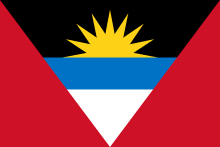














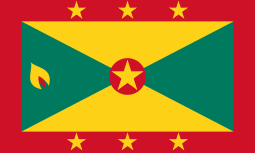

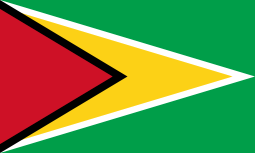

.svg.png)






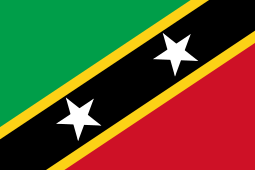

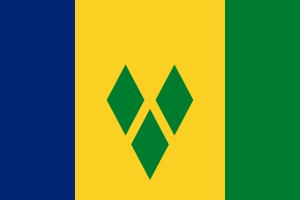
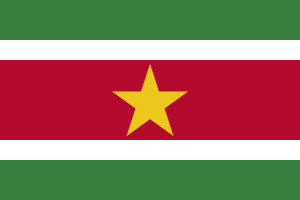



References
- "SEANWFZ Enters Into Force; U.S. Considers Signing Protocol - Arms Control Association". Armscontrol.org. Retrieved 19 October 2016.
- Evans, Michael. "Nuclear - The Earth Times - Encyclopaedia". Earthtimes.org. Retrieved 19 October 2016.
- "Final Act of the Fourth Session of the Preparatory Commission for the Denuclearization of Latin America" (PDF). UNODA. 27 February 1967.
- "Alfonso García Robles - Nobel Lecture: The Latin American Nuclear-Weapon Free Zone". www.nobelprize.org. Nobel Prize. 11 December 1982. Retrieved 25 March 2017.
- Palme, Olof (1982). Seguridad mundial: un programa para el desarme; informe de la Comisión Independiente sobre Asuntos de Desarme y Seguridad, bajo la presidencia de Olof Palme. Mexico: Lasser Press.
- "COPREDAL-OPANAL". OPANAL.
- "Treaty of Tlatelolco (Cuba)". archive.is. 7 July 2012. Archived from the original on 7 July 2012.
- "Alfonso García Robles - Facts". Nobelprize.org. Retrieved 19 October 2016.
- "Documents on Disarmament 1965" (PDF). 1966.
- Barbados OPANAL status
- Cuba OPANAL status